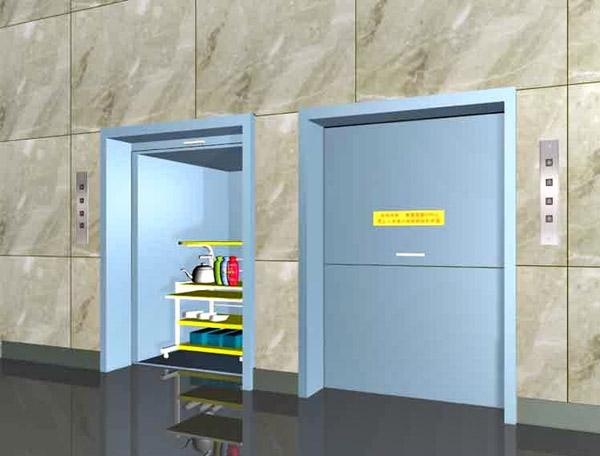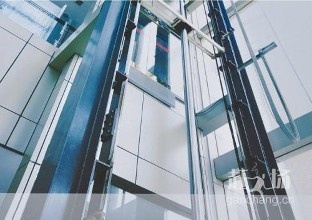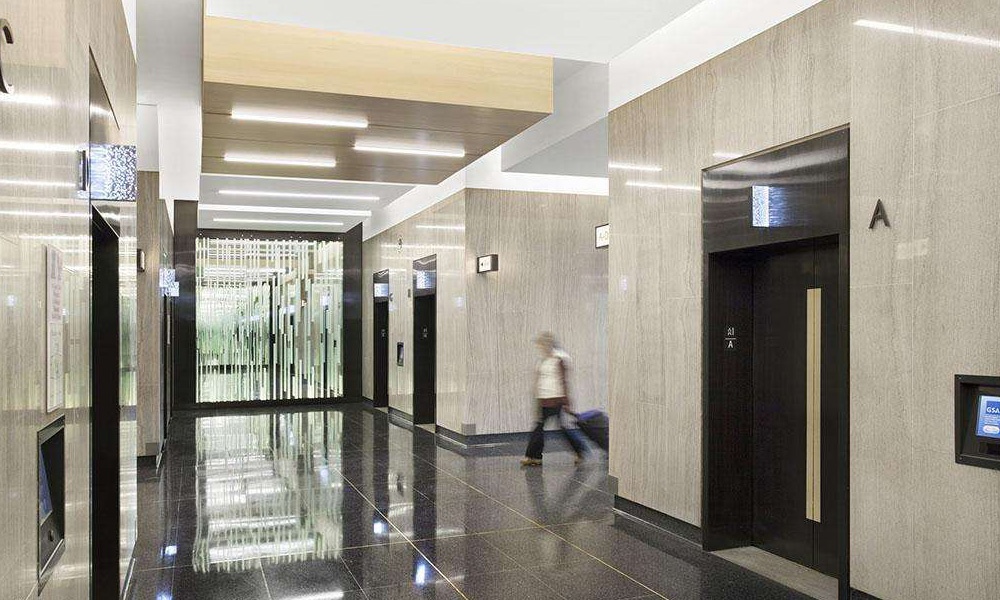

As more and more buildings are equipped with elevators, more and more investors and designers will encounter the question -- how to choose elevators for their projects? This paper discusses some key points that should be paid attention to when selecting and configuring elevator according to some technical problems.

1. The main parameters that determine the transport capacity -- the number of elevators, carrying capacity and rated speed The elevator shall have an appropriate carrying capacity. The transportation capacity can meet the 5-minute peak lift requirements, it can be considered that the choice of elevator is reasonable. The elevator should not arrive in the lobby too long apart. General requirements should not exceed 2-3 minutes. Simple estimation method: the elevator from the bottom to the top floor should not exceed 45~60s. Waiting time and ride time should be shortened as far as possible. This is to meet the psychological requirements of passengers. The acceptable limit of comparison is: waiting time of ladders shall not exceed 30s; riding time of ladders shall not exceed 90s. At present, the tendency to blindly pursue the speed of elevator is noteworthy. High-speed elevators do not necessarily shorten ride times and improve transport efficiency. In fact, we also need to consider the height of the building, the number of stops and dispatching technology, for the buildings that are not too high and the number of stops is more, the high-speed elevator generally can only run in the middle and low speed, and the opening and closing time and passenger access time of the high-speed elevator and the middle speed elevator stop floor are not very different. In order to improve the efficiency of elevator operation and reduce passenger time, new technologies such as direct stopping, early opening and quick closing have emerged in recent years. When the elevator stops directly, it cancels the low-speed flat section in the operation curve. The rated speed of the elevator decreases to zero at a certain speed, which is exactly the flat position. If there is a small deviation, it can be adjusted by "re-leveling" technique. Opening the door in advance means that the car has not reached zero speed, that is, the car is not completely flat layer within a small safe distance of the door to start the operation, until the car is completely accurate flat layer the door has been basically open; Fast closing means to increase the average closing speed and shorten the closing time on the premise of meeting the limits of the maximum stopping force and the maximum kinetic energy of the door. These measures may not seem to save much time on the flat floor of each stop and on the opening and closing of doors, but the cumulative effect of many floors is much better than simply increasing the speed of elevators.
2. The so-called reliability refers to the ability of elevator system to maintain the specified function within the specified time, which is a probability concept based on a large amount of statistical data. Our requirement for elevator reliability is that there should be as few faults as possible during the operation time, and once faults occur, they can be easily removed. And the links that affect personal safety, such as speed limiter, safety contact plate, grating door area protection system, must not fail. The advanced nature of the elevator mainly embodied in the drive and control technology, with the development of power electronic technology and computer technology the fundamental progress, vector control frequency modulation of the regulating speed technology (VVVF) of ac asynchronous motor speed control performance has reached the level of dc motor, using computer is replacing relay logic control system and control function of the lift increasing, the application of the network control and fuzzy control theory and make the elevator dispatching control to intelligent direction. Comfort mainly refers to the acceleration, vibration, noise, decoration, lighting and other indicators of the elevator, which aims to provide passengers with a comfortable ride environment. The early comfort requirements are mainly to control overweight and weightlessness, annoyance and anxiety within the tolerable range of passengers; Modern comfort is not only in the pursuit of passengers in the physical and psychological ride when the elevator as a "up and down the enjoyment." Obviously reliability is the most important index in the selection of elevator. National standard GB10058 stipulates that: 60 thousand faults less than 5 times are qualified products, less than 2 times are first-class products, less than 1 time is excellent products, and the fault is defined in appendix B. In addition to the tendency to neglect reliability, another tendency that should be paid attention to is the excessive pursuit of comfort. Some projects deliberately observe the slight vibration, noise and "aesthetic effect" of the elevator in the selection of the elevator, but don't understand other technical problems, resulting in the selection error, which can be said to be a common case.
3. Drive control mode - ac double speed, pressure regulating speed regulation and frequency regulating speed regulation. Uniform and straight motion at rated speed in normal operation. In the zero speed and rated speed between the speed of acceleration or deceleration transition, the motor speed control during this period of time called speed regulation. When the car accelerates or decelerates, passengers become overweight and weightless. Ordinary people are very limited in bearing capacity of overweight and weightlessness. China's national standard GB10058 stipulates that a value shall not be greater than 1.5m/s2. In addition, if the acceleration is always fatigued, passengers will have a feeling of turbulence and even dizziness. This requires the rate of change of acceleration to be as low as possible. Dc motor has good speed regulation performance, but dc motor USES collector ring power supply, the maintenance work is large. Ac asynchronous motor is simple in structure and reliable in operation. With the development of computer and power electronics technology, different speed regulation methods are used to meet the needs of different elevators. Low speed elevator usually adopts AC-2 scheme, with few control links and low failure probability. The main disadvantage is that the level of accuracy and ride comfort is difficult to both. Medium speed elevator adopts ACVV technology. This speed regulation mode changes the torque of the motor by changing the voltage, and controls the positive and negative angular acceleration of the motor by adjusting the difference between the torque of the motor and the load torque, and makes the elevator run under the controlled speed and acceleration with the full closed-loop control mode, which has become the leading product of domestic elevators at present. The new technology of frequency modulation and pressure regulation (VVVF) has appeared in the last decade. This speed control technology develops rapidly, and its speed control performance is completely comparable with that of dc motors. In addition to a good sense of comfort, the level of accuracy is greatly improved, and has obvious energy saving effect.

4.Signal control mode -- relay, PC and microcomputer. When a passenger takes an elevator, he/she should first send a call signal to the elevator at the floor where he/she is, and then register the signal to the floor where he/she is going after entering the elevator car. These Numbers will appear randomly and continuously, and the elevator signal controller will continuously record and arrange the execution sequence, which is the elevator signal control or logic control technology. In the early days of elevators, drivers typically processed signals and sent commands, a type of control called signal control. Later, the elevator can be operated by a driver or no driver by using logic circuits to answer and execute according to the prescribed procedures. This kind of control is called set selection control. When two or three elevators are installed in the elevator hall, they can be automatically scheduled in the specified order by the common call button, which is called parallel control. When several elevators are installed side by side, the number of signals is greatly increased. According to the operation condition of all elevators, the controller should quickly and automatically dispatch all elevators to answer the call requirements of each floor station separately according to the established dispatching technology. This control is called group control. Signal control and simple set selection control are implemented by relays over a long period of time. Later, with the development of computer technology, came the industrial general programmable controller - PC. Stood layer number and the function requirement more cases, many elevator company using 8-bit, 16-bit or 32-bit MCU development the special microcomputer control system, also use the new technology such as serial communication, the microcomputer network control, was introduced to the scheduling system design and the fuzzy control theory, adds many new features to the elevator in addition to the reliability and operation efficiency has improved significantly.
5. Should be caused take seriously, its a kind of hydraulic elevator, hydraulic elevator capsules rise of uniform motion in a straight line through the pump at a certain flow rate to rise at a constant speed injection oil in the oil cylinder piston, drop of uniform motion in a straight line through the oil cylinder oil to flow into the tank, capsules weight uniform decline to make the plunger, also have a speed control problem. In the cage rise generally have two ways, one is volume speed regulation, or called pump control cylinder speed regulation, the other is throttle speed regulation, or called valve cylinder control speed regulation. Throttle control is generally adopted when the car is descending. The advantage of hydraulic elevator is low requirements for the machine room, has a larger load capacity, safety problems are less. Disadvantages are limited height, generally no more than 6 floors building; The speed of elevators should not be very fast, generally not more than 1m/s. Freight elevator, especially large tonnage (2t above) freight elevator, hydraulic elevator should be preferred. It is difficult to find suitable machine room and well when the elevator is added in the old building. In addition, villa 2-3 - storey housing if necessary to set up elevators, hydraulic elevator is undoubtedly the most ideal model.


Wechat Public Number